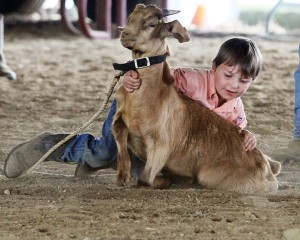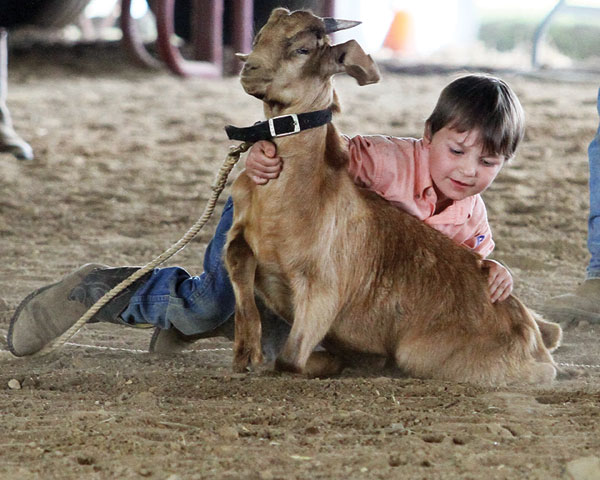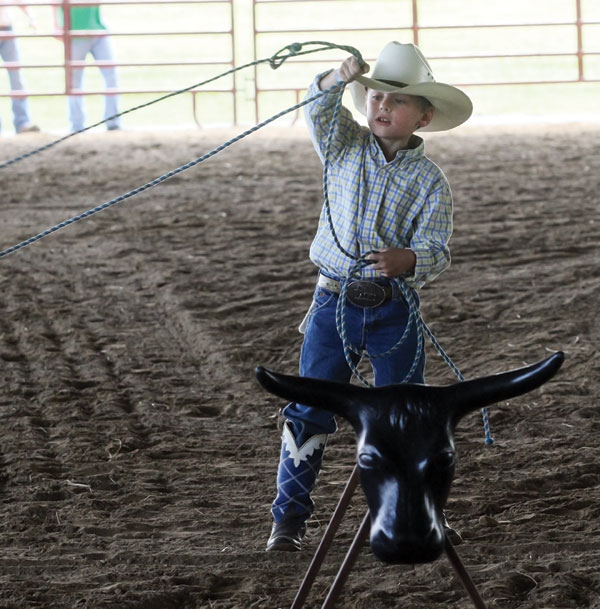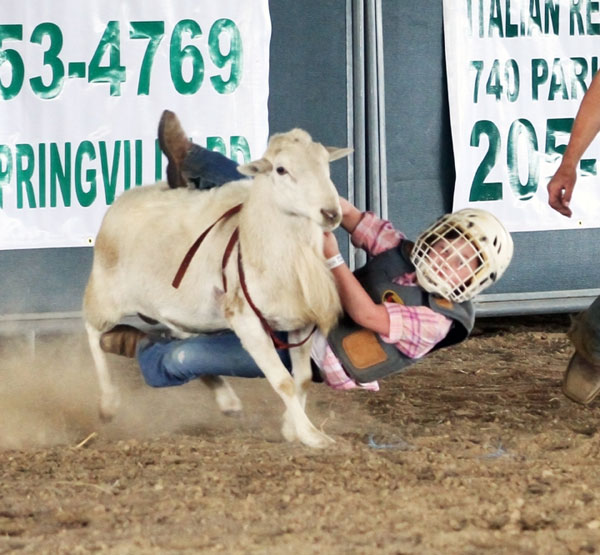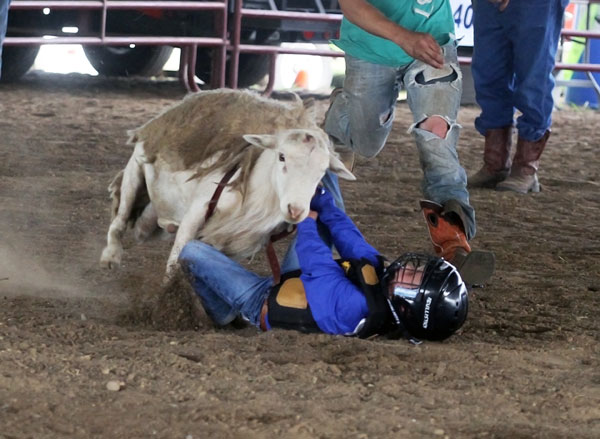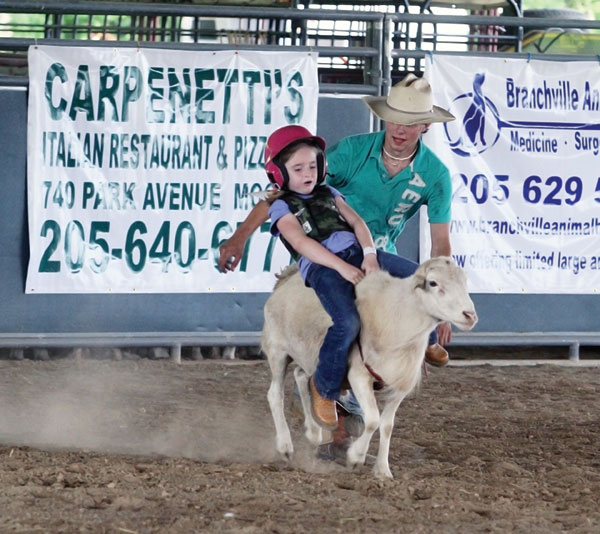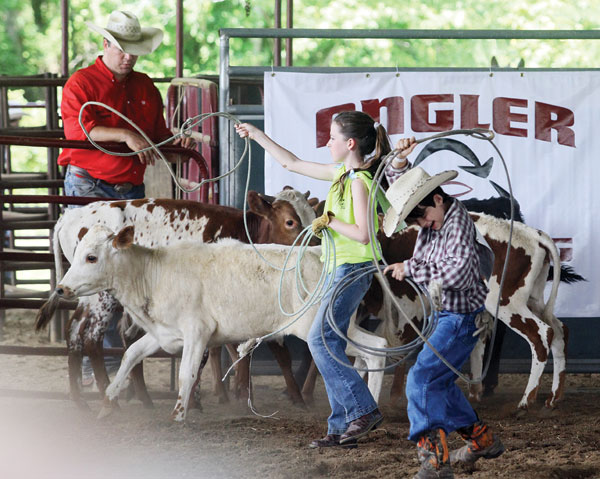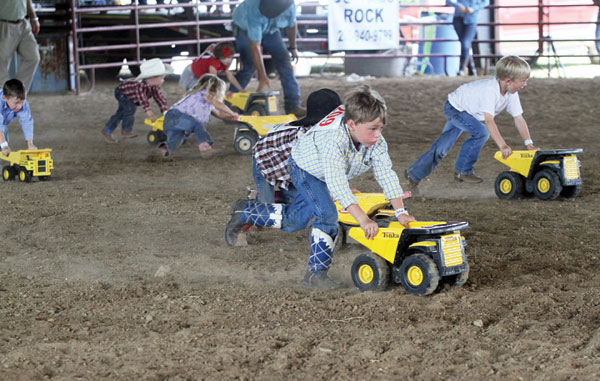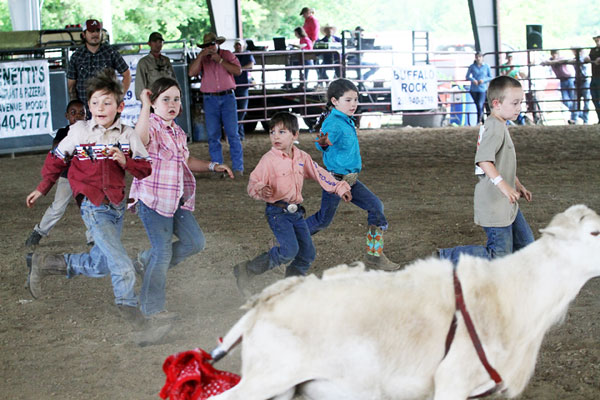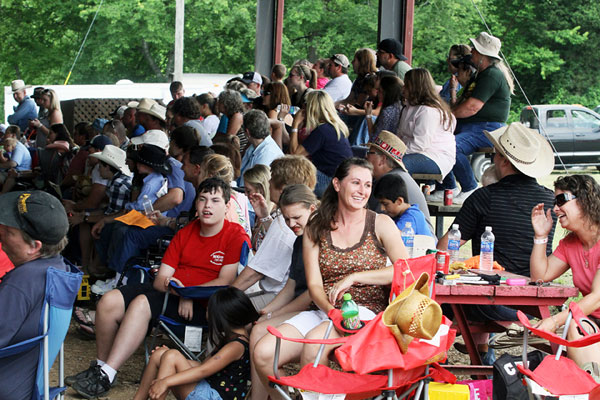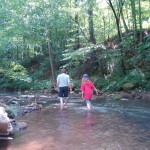
Project organizers hope to ultimately
create a major regional attraction
Story by Loyd McIntosh
Photos by Jerry Martin
The sun beats down on a stretch of gravel road and grass near Odenville as two men sit on some wooden bleachers next to a structure they hope will become the best unkept secret in St. Clair County.
Lude Mashburn, an agriculture teacher at Odenville High School, and Herschel Phillips, a retiree and Argo resident, are two of five members of the St. Clair Parks and Recreation Board, a body formed in 2011. They’re braving the early July heat to talk about the St. Clair Arena, originally built as a private horse arena that they are working to turn into an attraction for everything from rodeos to church revivals and everything in between.
For Mashburn, the acquisition was a long time coming. “I teach ag out here, and I’ve been trying to get one for 40 years and never could get one,” he says.
The 125,000-square-foot structure went on the market a couple of years ago, and Mashburn saw an opportunity and convinced county officials to purchase the facility and put it to public use. The purchase price was somewhere in the neighborhood of $500,000, but early demand for outside groups looking to rent the facility gives them hope that the St. Clair Arena will pay for itself.
The arena already has hosted a semi-pro rodeo circuit as well as a junior rodeo, where close to 400 people came out to watch kids ages 2 to 16 ride sheep and goats for the crowd. A local church brought its horse ministry to the arena, attracting several hundred people as well. But before they can really begin marketing the arena, the Board needs to address the sparseness of the facility in order to meet the needs of groups interested in investing in rent.
“Our mission right now is to get this up and running because we know people are wanting to rent the place,” says Phillips.
“I really think this will provide. If we’re able to do our job the way we should, we will be able to provide a lot of activity for people to come from Birmingham or anywhere else around here,” Phillips adds. “I really believe that. People are starved for something to do.”
“(The County) is going to give us some money where we can fix it up where we can have some bleachers, a concession stand and bathrooms,” adds Mashburn. “We’re going to get it going, and we can have car shows, anything we want to have.”
Plans have already been drawn for these, and other expansions and are expected to be bid soon. “The arena’s pavilion, which includes concession, restroom and showers, is designed to be octagonal rather than the typical rectangular park building,” according to Kelley Keeton Taft, whose company, the Kelley Group, drew the plans. “This design was chosen to reflect the octagonal era of barn construction from 1850 to 1900,” she says. “The pavilion, crested with a cupola, will set a theme for the arena.”
Focusing on the Commission and the Board’s vision to attract a variety of events, Taft says the design “utilizes existing structures while incorporating the necessary improvements to take the venue to the next level of event capabilities. The design integrates connectivity and focuses on safety for spectators, trailered vehicles and animals.”
Other features include entrance and exit roads, designated parking and pedestrian pathways, lighting, covered sidewalks, covered extensions of the arena with bleachers to seat approximately 600 and an area for vendors or exhibitors to set up during events.
The county is committed to making the arena a success and will set the budget based on what the payments will be for the planned upgrades, says Commission Chairman Stan Batemon. “As those upgrades become an attraction to that facility, then we’ll know more about what kind of events that the Park and Rec board can have there that will generate some revenue and operate the facility.”
The goal is not necessarily for the arena to recoup the initial $500,000 spent to acquire the facility, the additional 18 acres and smaller buildings on the property. Nor is it expected to be a cash cow for the county. As long as the arena is being used, people are enjoying it and it’s paying its future expenses, that’s fine with him and the rest of the County Commission, Batemon says.
“We’re still a small county, and this is our first venture,” he says. “The goal is that it will be self-sustaining, but not necessarily drive revenue back to the county. If it is self-sustaining, the County Commission will be completely satisfied with that. The main goal is that it will eventually operate itself.”
Since the board’s inception, county leaders have been busy expanding outdoor recreational opportunities throughout unincorporated St. Clair County. And officials are investigating areas that might be accessed for multipurpose trails for horseback riding, hiking and mountain biking throughout the county. This could include areas along the 80 miles of river shoreline that may qualify for federal funds. However, the jewel, so far, in the county’s crown is the St. Clair Arena.
The end goal, say Phillips and Mashburn, is to bring people from Birmingham and beyond to St. Clair County to enjoy rural type entertainment and programs in one of the very few covered arenas in north Alabama. Mashburn’s additional hope is that the arena will help reignite interest and passion for farming and agriculture among the youths and future generations of St. Clair countians.
Mashburn says it is important to get as many kids as possible interested in rural lifestyles, which he fears are being lost. He and Phillips agree there aren’t enough activities available for area kids who aren’t involved in mainstream sports but are hungry for activities in which to participate and thrive.
“What do they have to do other than football games, baseball games and basketball games? What are their opportunities other than those three sports?” asks Mashburn. “I see kids that didn’t know anything about animals. Once you get them around a horse or a cow, they realize it’s not a bad animal, and they get excited about it.”
Mashburn’s main concern is the future of farming. The number of people choosing agriculture as a career gets smaller every year and the amount of land used for farming is dwindling, too. He thinks the arena can be used to help introduce a new generation of kids to agriculture through recreational activities, like rodeo and horsemanship.
“There’s not too many of them that are going to be everyday hog farmers or poultry farmers. You’ve got to have all that stuff, so you’ve got to bring new kids in. If we don’t, we’re going to be in trouble,” says Mashburn.
The arena just may be that first step in bridging the gap.











